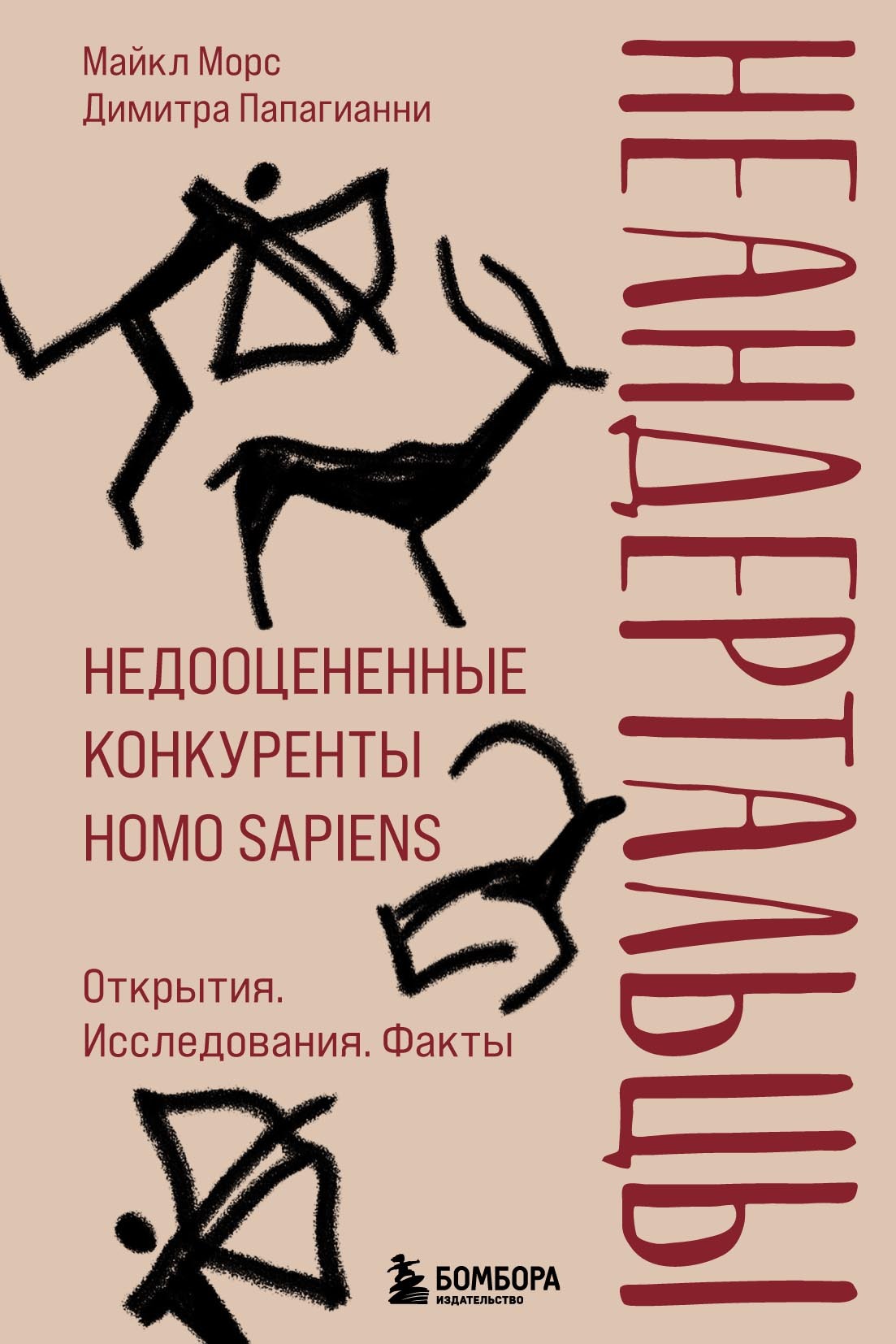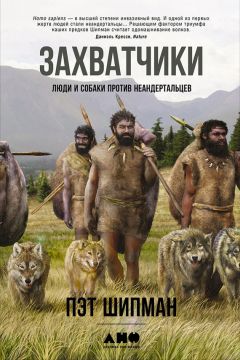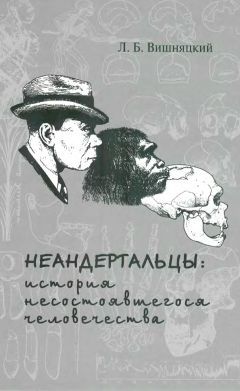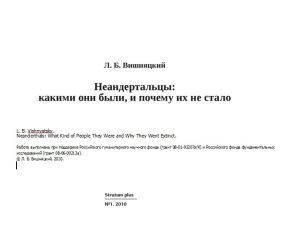Вымершие люди: почему неандертальцы погибли, а мы — выжили - Клайв Финлейсон
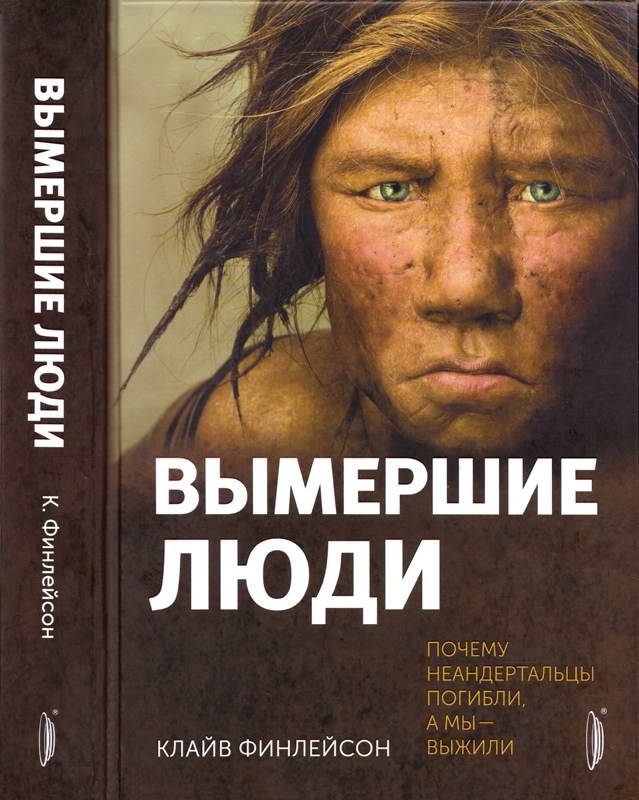
Помощь проекту
Вымершие люди: почему неандертальцы погибли, а мы — выжили читать книгу онлайн
341
R. Jennings, ‘Neanderthal and Modern Human Occupation Patterns in Southern Iberia during the Late Pleistocene Period’, DPhil Thesis, University of Oxford, 2006.
342
N. Garcia and J. L. Arsuaga, ‘Late Pleistocene Cold-Resistant Faunal Complex: Iberian Occurrences, in M. Blanca Ruiz Zapata et al. (eds), Quaternary Climatic Changes and Environmental Crises in the Mediterranean Region (Madrid: Universidad de Alcala de Henares, 2003), 149–59.
343
M. Vaquero et al., ‘The Neandertal-Modern Human Meeting in Iberia: A Critical Review of the Cultural, Geographical and Chronological Data’, in N. J. Conard (ed.), When Neanderthals and Modern Humans Met (Tubingen: Kerns Verlag, 2006), 419–39.
344
Горные цепи Юго-Восточной Испании являются самыми высокими на Пиренейском полуострове. Их высота превышает 3000 метров в Сьерра-Неваде.
345
Инбредные линии возникают в результате повторяющихся близкородственных связей.
346
E. J. Jimenez-Espejo et al., ‘Climate Forcing and Neanderthal Extinction in Southern Iberia: Insights from a Multiproxy Marine Record’, Quat. Sci. Rev. 26(2007): 836–52.
347
Климатическая причина гибели последних неандертальцев была впоследствии ошибочно принята за причину вымирания неандертальцев. В одном исследовании была предпринята попытка сравнить климатические признаки в регионе с последними датировками из пещеры Горама, и был сделан вывод о том, что климат не был слишком суровым. Ошибка заключалась в том, что авторы не смогли признать, что опубликованные даты относились к поздним выживавшим особям и не отражали исчезновения всего вида. То, что даты совпали с благоприятными условиями, это именно то, чего и следовало ожидать. Р. С. Tzedakis et al., ‘Placing Late Neanderthals in a Climatic Context’, Nature 449(2007): 206–8.
348
Литторины — брюхоногие моллюски.
349
E. Trinkaus, ‘Early Modern Humans’, Ann. Rev. Anthropol. 34(2005): 207–30.
350
J. T. Kerr and L. Packer, ‘Habitat Heterogeneity as a Determinant of Mammal Species Richness in High-Energy Regions’, Nature 385(1997): 252–4; C. Finlayson, Neanderthals and Modern Humans: An Ecological and Evolutionary Perspective (Cambridge: Cambridge University Press, 2004).
351
C. Finlayson and J. S. Carrion, ‘Rapid Ecological Turnover and Its Impact on Neanderthal and Other Human Populations’, Trends Ecol. Evol. 22(2007): 213–22.
352
S. Wells et al., ‘The Eurasian Heartland: A Continental Perspective on Y Chromosome Diversity’, Proc. Natl. Acad. Sci. USA 98(2001): 10244-9.
353
M. B. Richards et al., ‘Phylogeography of Mitochondrial DNA in Western Europe’, Ann. Hum. Genet. 62(1998): 241–60; P. A. Underhill et al., ‘The Phylogeography of Y Chromosome Binary Haplotypes and the Origins of Modern Human Populations’, Ann. Hum. Genet. 65(2001): 43–62; P. Forster, ‘Ice Ages and the Mitochondrial DNA Chronology of Human Dispersals: A Review’, Phil. Trans. Roy. Soc. bond. B. 359(2004): 255–64.
354
М. Anikovich, ‘Early Upper Paleolithic Industries of Eastern Europe’, J. World Prehist. 6(1992): 205–45; T. Goebel et al., ‘Dating the Middle-to-Upper Paleolithic Transition at Kara-Born, Curr. Anthropol. 34(1993): 452–8; T. Goebel and M. Aksenov, ‘Accelerator Radiocarbon Dating of the Initial Upper Palaeolithic in Southeast Siberia’, Antiquity 69(1995): 349–57; M. Otte and A. Derevianko, ‘Transformations Techniques au Paleolithique de l’Altai (Siberie)’, Anthropol. et Prehist. 107(1996): 131–43; Y. V. Kuzmin, ‘The Colonization ofEastern Siberia: an Evaluation of the Paleolithic Age Radiocarbon Dates’, J. Archaeol. Sci. 23(1996): 577–85; P. J. Brantingham et al., ‘The Initial Upper Paleolithic in Northeast Asia’, Curr. Anthropol. 42(2001): 735–47; P. Pavlov, J. I. Svendsen, and S. Indrelid, ‘Human Presence in the European Arctic Nearly 40,000 years ago’, Nature 413(2001): 64–7; P. Pavlov,W. Roebroeks, and J. I. Svendsen, ‘The Pleistocene Colonization of Northeastern Europe: A Report on Recent Research, J. Hum. Evol. 47(2004): 3–17; M. V. Anikovich et al., ‘Early Upper Paleolithic in Eastern Europe and Implications for the Dispersal of Modern Humans’, Science 315(2007): 223–6.
355
Anikovich, ‘Early Upper Paleolithic Industries’; Otte and Derevianko, ‘Transformations Techniques’; V. Y. Cohen and V. N. Stepanchuk, ‘Late Middle and Early Upper Paleolithic Evidence from the East European Plain and Caucasus: A New Look at Variability, Interactions, and Transitions’, J. World Prehist. 13(1999): 265–319; Brantingham et al., ‘The Initial Upper Paleolithic in Northeast Asia; V. P. Chabai, ‘The Chronological and Industrial Variability of the Middle to Upper Paleolithic Transition in Eastern Europe’, in J. Zilhao and F. d’Errico (eds), The Chronology of the Aurignacian and of the Transitional Technocomplexes. Dating, Stratigraphies, Cultural Implications, Trabalhos de Arqueologia 33 (Portugal: IPA, 2003), 71–86; Anikovich et al., ‘Early Upper Paleolithic in Eastern Europe’.
356
Wells et al., ‘The Eurasian Heartland’; S. Wells, The Journey of Man: A Genetic Odyssey (London: Penguin, 2002).
357
O. Semino et al., ‘The Genetic Legacy of Paleolithic Homo sapiens sapiens in Extant Europeans: A Y Chromosome Perspective’, Science 290(2001): 1155–9; Wells et al., ‘The Eurasian Heartland’; Wells, The Journey of Man.
358
J. Diamond, Guns, Germs and Steel. A Short History of Everybody for the Last 13,000 Years (London: Jonathan Cape, 1997).
359
S. McBrearty and A. S. Brooks, ‘The Revolution That Wasn’t: A New Interpretation of the Origin of Modern Human Behaviour’, J. Hum. Evol. 39(2000): 453–563.
360
Finlayson, Neanderthals and Modern
